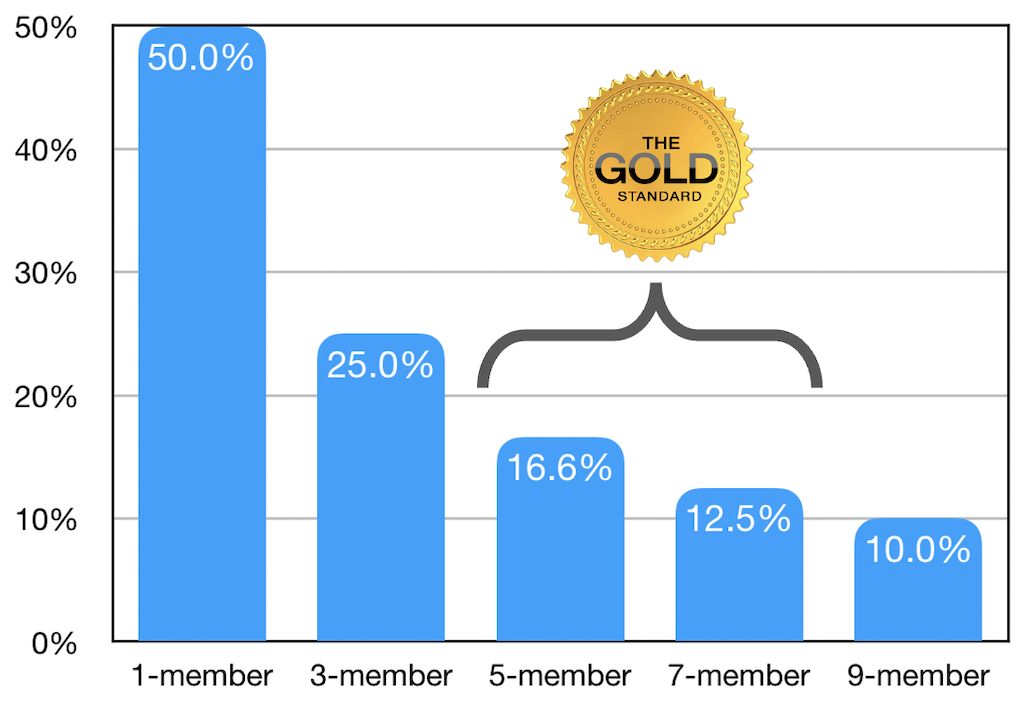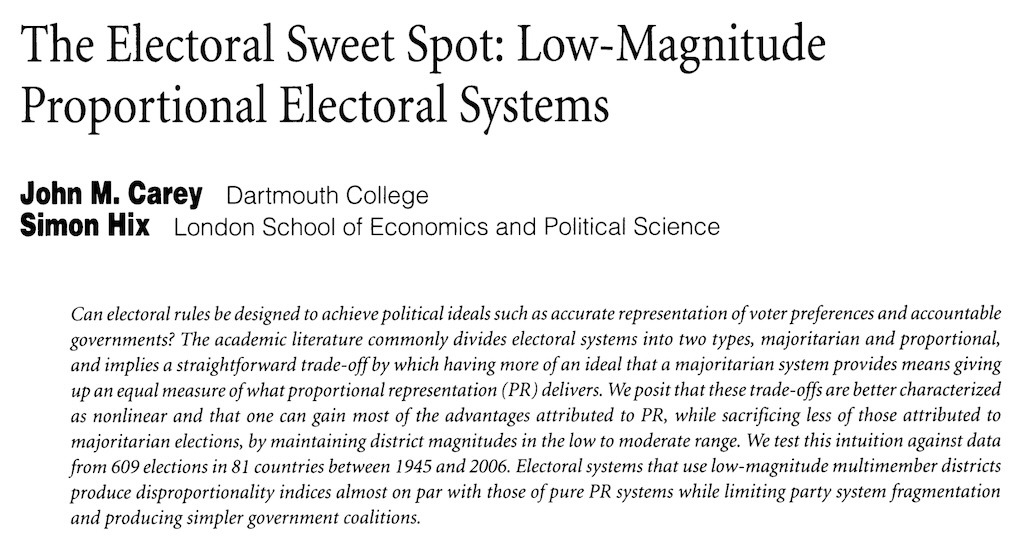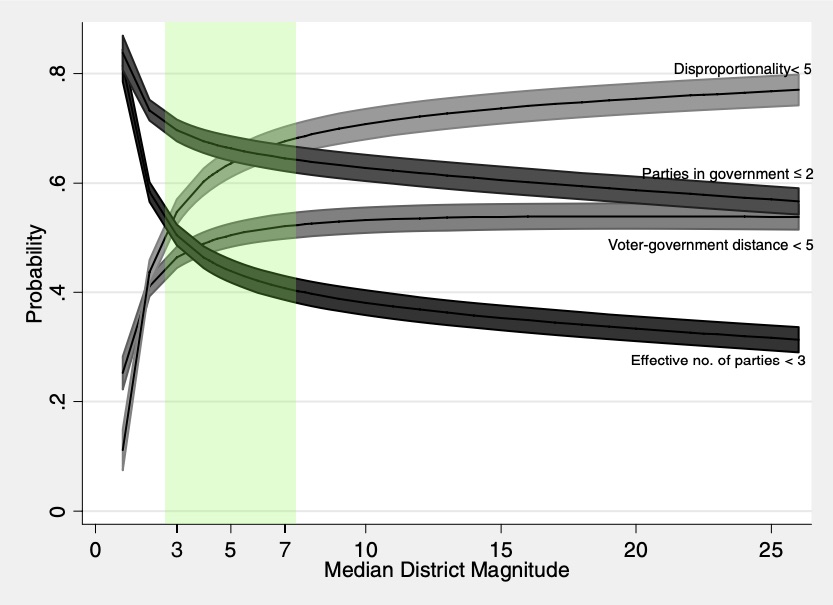District magnitude refers to the number of representatives returned (or elected) from a district. As the district magnitude increases so does the proportionality of the result. If the district magnitude is too large, then the number of candidates and the size of the ballot paper becomes unmanageable, and the link to a specific geographic area is weakened. For large representative bodies, such as State & Federal parliamentary chambers, PRSA policy is to advocate for a gold standard district magnitude of 5 or 7.

To be elected from a 5-member district, a candidate only needs to obtain 16.6% of the vote. This delivers good proportionality, ensuring that the views of the elected representatives reflect the views of the people who elect them.

For smaller bodies, such as Local Government Councils, 7-member districts function well in regional areas, but less well in metropolitan areas, where they attract too many candidates and an overly large ballot paper. Also, 5- and 7-member districts only permit Councils of 5, 7, 15 or 21 members (assuming a maximum Council size of 21), which is not flexible enough. Therefore, for smaller representative bodies the PRSA recommends an option for 3 members per district. This enables Councils to be optionally comprised of 9 members.
For an academic discussion of district magnitude we refer readers to The Electoral Sweet Spot: Low-Magnitude Proportional Electoral Systems, by Carey and Hix:
our results suggest an optimal district magnitude in the range of three to eight.
–
single member district systems tend to produce…relatively unrepresentative parliaments.
–
electoral systems with large multimember districts…have highly fragmented party systems and unwieldy multiparty coalition governments.
–
…legislative elections work best when they offer opportunities for multiple winners, and thus afford voters an array of viable options, but at the same time do not encourage niche parties or overwhelm voters with a bewildering menu of alternatives. The evidence from a wide range of indicators all points toward low magnitude proportional representation as providing a good balance between the ideals of representation and accountability.
Carey and Hix, The Electoral Sweet Spot


